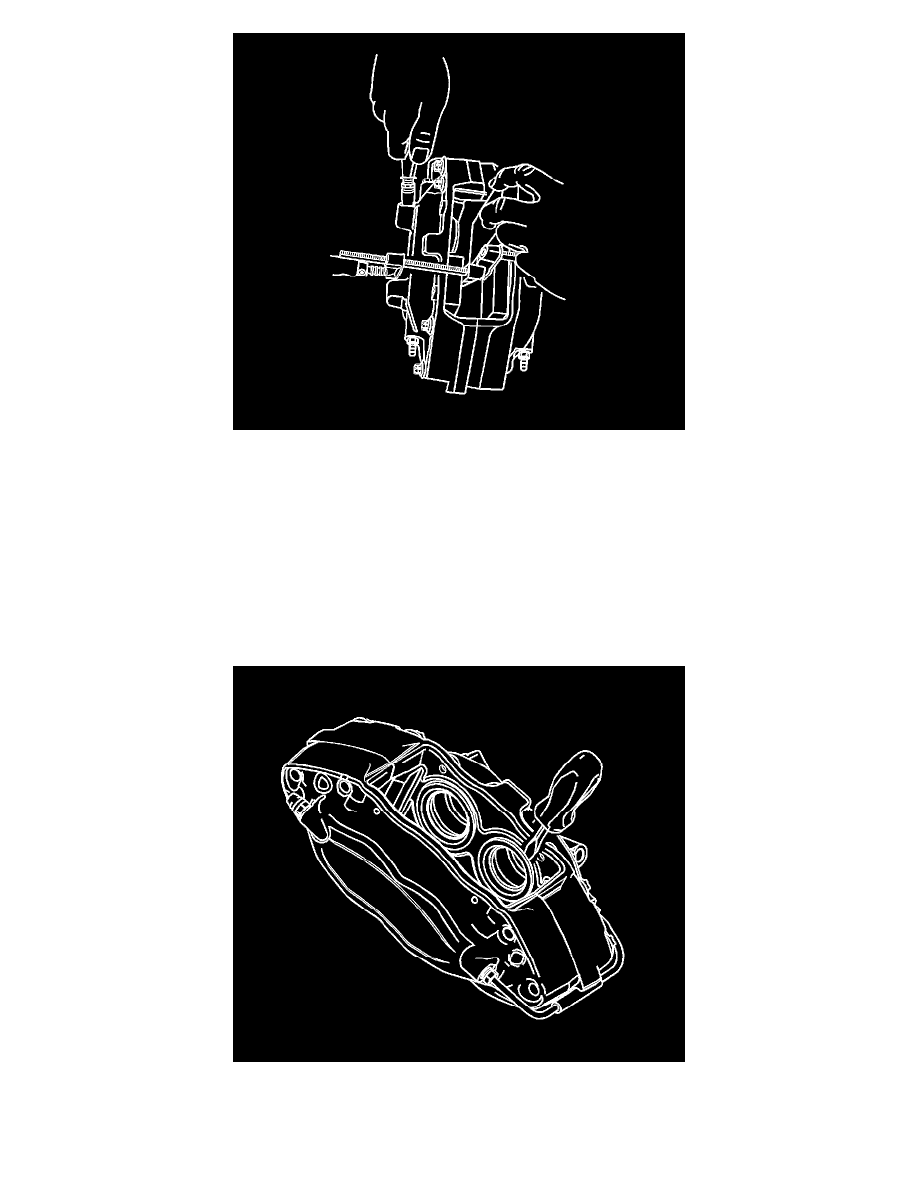Camaro V8-6.2L (2010)

4. Place an old brake pad or the fabricated 127 mm (5 in) long block of wood over 2 adjoining piston bores and secure in place with a non-marring
C-clamp.
5. Place the fabricated 51 mm (2 in) long block of wood over one of the opposing piston bores and secure it in place with a non-marring C-clamp.
6. Use clean cloths or the other fabricated 127 mm (5 in) long block of wood to pad the interior of caliper housing during removal of the piston.
7. Carefully remove the brake caliper piston by directing low pressure compressed air into the brake caliper inlet hole. If the dust boot seal slides out
with the piston, remove the dust boot seal from piston and reinstall the seal into the caliper.
8. Move the fabricated 51 mm (2 in) long block of wood over the emptied piston bore and secure it in place with a non-marring C-clamp.
9. Move the clean cloths or the other fabricated 127 mm (5 in) long block of wood to pad the interior of caliper housing during the removal of the
piston.
10. Carefully remove the brake caliper piston by directing low pressure compressed air into the brake caliper inlet hole. If the dust boot seal slides out
with the piston, remove the dust boot seal from piston and reinstall the seal into the caliper.
11. Repeat steps 4 through 10 for the opposite side of the caliper.
12. Using care to not scratch or mar the painted surfaces or piston bore, remove all the dust boot seals using a flat-bladed tool. Discard the dust boot
seals.
